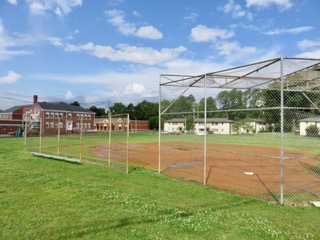
Ballfield and old Henry School at Westside Park
photo by John Shearer

Westward view from Westside Park
photo by John Shearer

Old brick fire pit
photo by John Shearer

Westside Park’s tennis courts in front of College Hill Courts
photo by John Shearer

Soccer field above Westside Park
photo by John Shearer
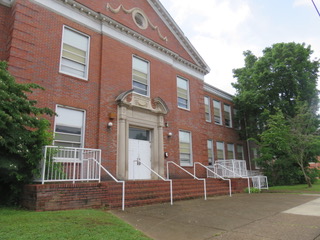
Stately former James A. Henry School
photo by John Shearer

Young tree and pavilion at Jefferson Park
photo by John Shearer

Small pond at Jefferson Park
photo by John Shearer

Small wooded area across Madison Street from Jefferson Park
photo by John Shearer

Wildflowers by Jefferson Park pond
photo by John Shearer

Sculpture at Jefferson Park
photo by John Shearer
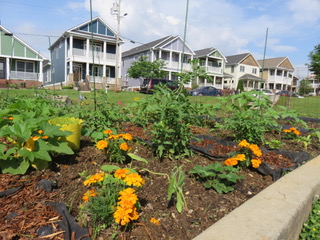
Flowers in Jefferson Park vegetable garden
photo by John Shearer

Old Liberty Elm tree
photo by John Shearer

Jefferson Park apple tree
photo by John Shearer

Vacant lot on Rossville Avenue
photo by John Shearer

Giant sculpture at Montague Park
photo by John Shearer

Red sculpture among landscape at Montague Park
photo by John Shearer

Historic building behind sculpture
photo by John Shearer
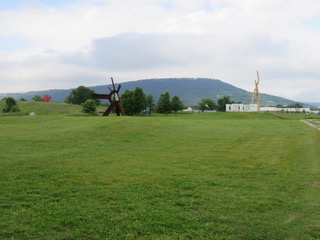
Plenty of greenspace at Montague Park
photo by John Shearer

Old armory buildings by Montague Park
photo by John Shearer

Another sculpture amid Montague greenspace
photo by John Shearer

Queen Anne’s lace in front of Montague sculpture
photo by John Shearer
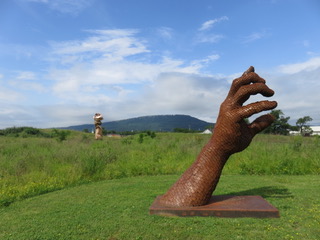
‘Handy” Piece of Montague art
photo by John Shearer

Small pond at Montague Park
photo by John Shearer

Front field at Montague
photo by John Shearer
After visiting the natural and lakeside Chester Frost and Booker T. Washington parks for the previous two entries in this series, I decided to head closer to downtown Chattanooga for more of an urban park experience.
So, I visited the Sheila M. Jennings Westside Park near Interstate 24 and East M.L.
King Boulevard, Jefferson Park in the newer Jefferson Heights development off Main Street, and the much-changed Montague Park off 23
rd Street.
I was actually planning to visit Warner and Lincoln parks as well, but then realized the first three places were enough for one story and one car trip.
After leaving my house Saturday morning from the Northgate Mall area, I first planned to go to Westside Park, so I worked my way through Red Bank to U.S. 27 and across the Olgiati Bridge toward downtown.
Unfortunately, some streets were closed and turns were not allowed, so I actually had to circle around a few side streets near the Read House before I could work my way back under the Interstate and turn left at Gateway Avenue. But I did not let the misfortune make me cranky!
After going through the nicely laid out senior residential towers and surrounding landscaping – which are so attractively done that someone would love to convert this area into higher-end private housing – I took another left at Boynton Drive and yet another left at Grove Street.
Just past the attractive former James A. Henry Elementary, which was built in 1937 and which I had never seen before, sits the Shelia M. Jennings Westside Park.
I had never been to the park, either, but it is a nicely laid out space of several acres. It features a ballfield with fencing and caging, two tennis courts that probably need to be resurfaced, some picnic areas, an asphalt walking/jogging path and that most important of park amenities – an adequate amount of grass.
The facility also appears to have some kind of interesting brick-framed structure that might have been a fire pit for grilling.
While not overly beautiful, Westside Park overall is no doubt a welcome piece of greenspace and a nice amenity for the adjacent College Hill Courts public housing project and an obviously lower-income neighborhood. And it has a nice, unobstructed view of Lookout Mountain.
I was unable to find much history on the park, but it probably has a connection to the old Henry school, which predates the leveling of Cameron Hill for urban renewal and freeway construction by 20 years.
I did find online that Sheila Jennings was a College Hill Courts residence leader and was involved in the neighborhood in other positive ways before she died in 2008 at the age of only 43.
Due to the fact this area is shut off on one side by the Interstate, and one has to go down several streets to get there, it is likely never seen or used by all the professional and higher-income residents who live just a few hundred yards from the park as a crow flies.
But if it and the soccer field up the hill and a little east on 12th Street by the Chattanooga Youth and Family Development Administrative Office could be connected better physically to the other streets and residents, a better social connection could result, too.
Of course, that might expedite changes and gentrification and an end to some of the historical character of the Westside area. But a little more cross culturalization between this area and those places around it would probably be more helpful and welcome, particularly as the park is concerned.
A short distance down Riverfront Parkway and east on Main Street is a similarly sized – but totally flat – park that probably does a better job of serving the newer, more upscale housing immediately around it than perhaps any other greenspace in town.
This is, of course, Jefferson Park, located off Jefferson Street. I have also seen it referred to as the Jefferson Heights Playground or Jefferson Heights Park.
I had seen this park from a block or so away several times before while visiting extended family living in the Jefferson Heights neighborhood of mostly newer, vertical-style homes. But when I examined the park Saturday up close, it was probably about two times bigger than I thought. Needless to say, I was pleasantly surprised.
It is roughly 100 yards wide and about 150 yards long, and it packs plenty in it. It has a mini-pond, a pavilion, a playground, a few paved walking paths, a beach volleyball court and, get this, quite a few gardens of flowers and vegetables and some fruit trees.
The owner or even groundskeeper of a nice estate might get a little jealous seeing all this.
Further research would be required to learn about the fruit trees, but only a quick glance is required to realize this is a real peach of a park.
The star arboreal attraction – at least to me – was the lone old tree on the property: a large American Liberty elm. Actually, I had no idea what it was and would have guessed it was a willow oak, but a young father there with his daughter saw I was taking pictures of it, and he pointed me to a plaque explaining about the tree.
The tree uniquely has a trunk that is significantly wider at its base than the area just above it.
I understand from a blog found online from 2014 that the park was actually the site of a former school. The blog also said that the unusually slanted pavilion was built with recycled pavilion materials and with the help of a neighborhood architect.
What I also like about the park is that it has enough grass to make a 30-minute jog around and through it enjoyable. Often, I have to take a quick jog due to a shortage of time, and since I also like jogging on grass and not asphalt, I would enjoy living near this park for those days when I don’t have time to take a longer jog at a larger and more scenic spot.
Jefferson Park, however, does have its own aesthetically pleasing setting with nice-looking homes around it, and it almost seems to be recreating the squared-off and safe urban residential neighborhood streets of old.
Several people were there, and it seemed much livelier than Westside Park, at least on this morning. Actually, if one person had been there, it would have been livelier, as I saw no one at Westside other than a man standing on the sidewalk on the park’s edge.
Just across Madison Street from Jefferson Park is a nice small wooded plot with a small pond and zoning sign in front of it. I don’t know what the plans for it are, but it would make a nice picnicking area under all the trees, especially on hot summer days.
The vacant former residential lots on Rossville Avenue a few yards away would, too, although they might need a few more trees.
I then worked my way over to 23rd Street, headed in the direction of Missionary Ridge, but turned left at Polk Street well before then. I was going to my final destination of the day – Montague Park, or, as most of it is known now: the Sculpture Fields at Montague Park.
Like its various name changes, Montague Park has morphed quite a bit in appearance and function over the years. According to some information at its website, it opened as a 49-acre park in 1911 on land donated after the death of Theodore G. Montague. He was a successful and wealthy banker who also developed Highland Park, so perhaps this nearby land was part of those holdings.
In the 1940s, it was used as a construction dump for a period, which was likely not what the then-deceased widow Mrs. Mary Montague had in mind when she handed over her late husband’s former land.
After that it was used for recreation, including when adult men’s industrial league softball was quite popular around the 1970s era. I remember playing there on a Chattanooga News-Free Press team in the 1980s.
Now, it is quiet both above and below the ground. After an investigation revealed in 2003 that environmental issues related to the land’s use as a landfill made it unsafe for recreation, it was recapped. It now has different kinds of mounds/circles from those used by pitchers.
After years of development plans, the non-profit Sculpture Fields group signed a 40-year lease with the city of Chattanooga in 2012, and it now has more than 40 sculptures from accomplished artisans. As a result, it is like a giant outdoor art gallery covering 33 acres.
I would love to examine all the different pieces more closely in the future, but on this day, I was more focused on nature’s gallery – other than to experience the feeling of being at Stonehenge after passing one or two of the bigger pieces.
The park is well landscaped in an undulating way, and has several nice trails, and, especially for me, endless grass on which to jog. As a result, it is definitely a place I would like to return to with my jogging clothes and shoes.
And it also has a panoramic view of Lookout Mountain, Raccoon/Elder Mountain and Signal Mountain a few miles away.
The uneven land also features plenty of places with high grass, leading one to believe a three- or four-hole golf course could be placed there if the art situation does not work out! A small pond or two can also be found, and a lot of the small trees of different varieties will add to the natural aesthetics – and provide more shade on hot summer days – as the years pass.
The park is also unintentionally an architecture gallery as well as a sculptural one, as two or three interesting and well-designed buildings of old – including the neat-looking and stone-covered Armory complex – line the outside of the park in places.
In the front of the park along 23rd Street is still a sports field, with rugby-like tall goal posts, perhaps creating a little sense of connection for those who nostalgically remember playing sports there. The old Montague name on cut-off telephone poles also still sits at the corner by Polk Street.
Opened from dawn to dusk, this is a great and unique oasis of green on the edge of the center city, and about any downtown dweller looking for some greenspace could easily get there within five to 10 minutes. The same is true for those on Missionary Ridge, Highland Park, Glenwood, Ridgedale or the area on the east side of the ridge.
The park, on the other hand, had quite a journey getting to where it is now. But the current destination as an art-focused greenspace seems to have made it all worthwhile.
* * * * *
To see the previous story in the series on area greenways, read here. https://www.chattanoogan.com/2020/5/11/408857/John-Shearer-Exploring-and-Searching.aspx
* * * * *
Jcshearer2@comcast.net